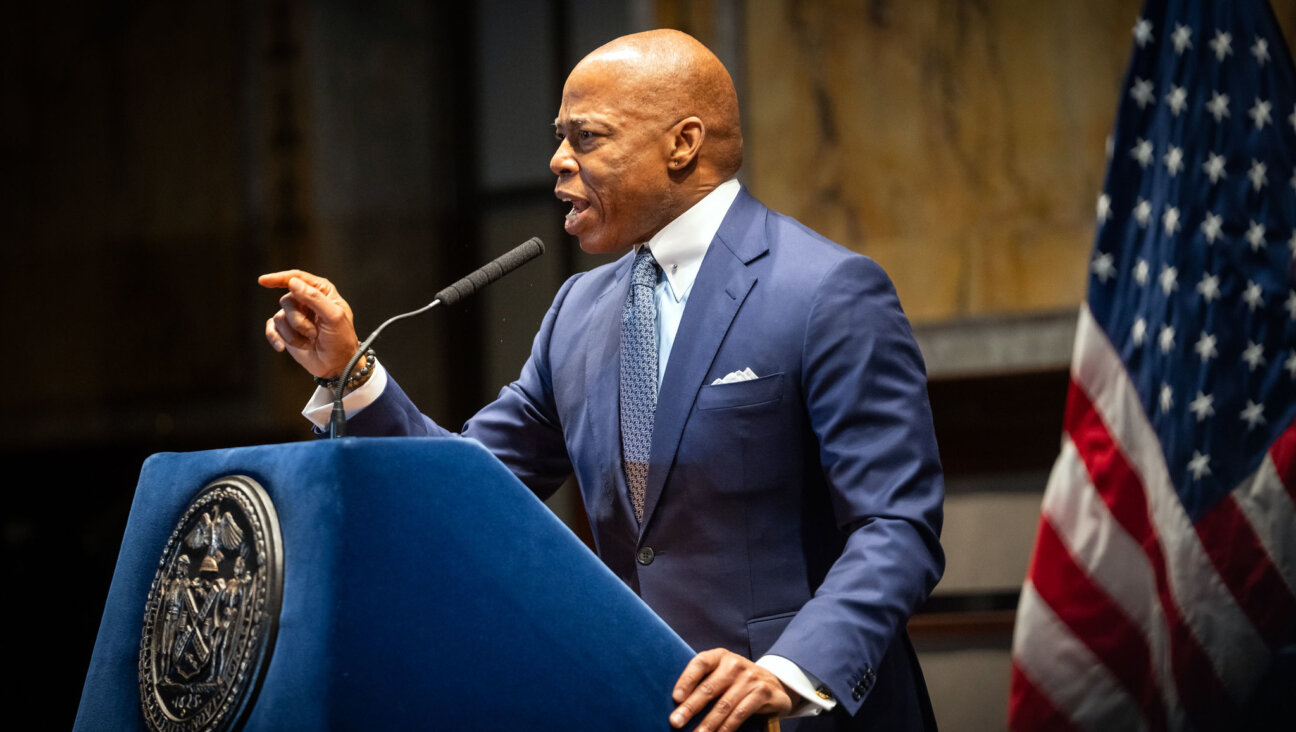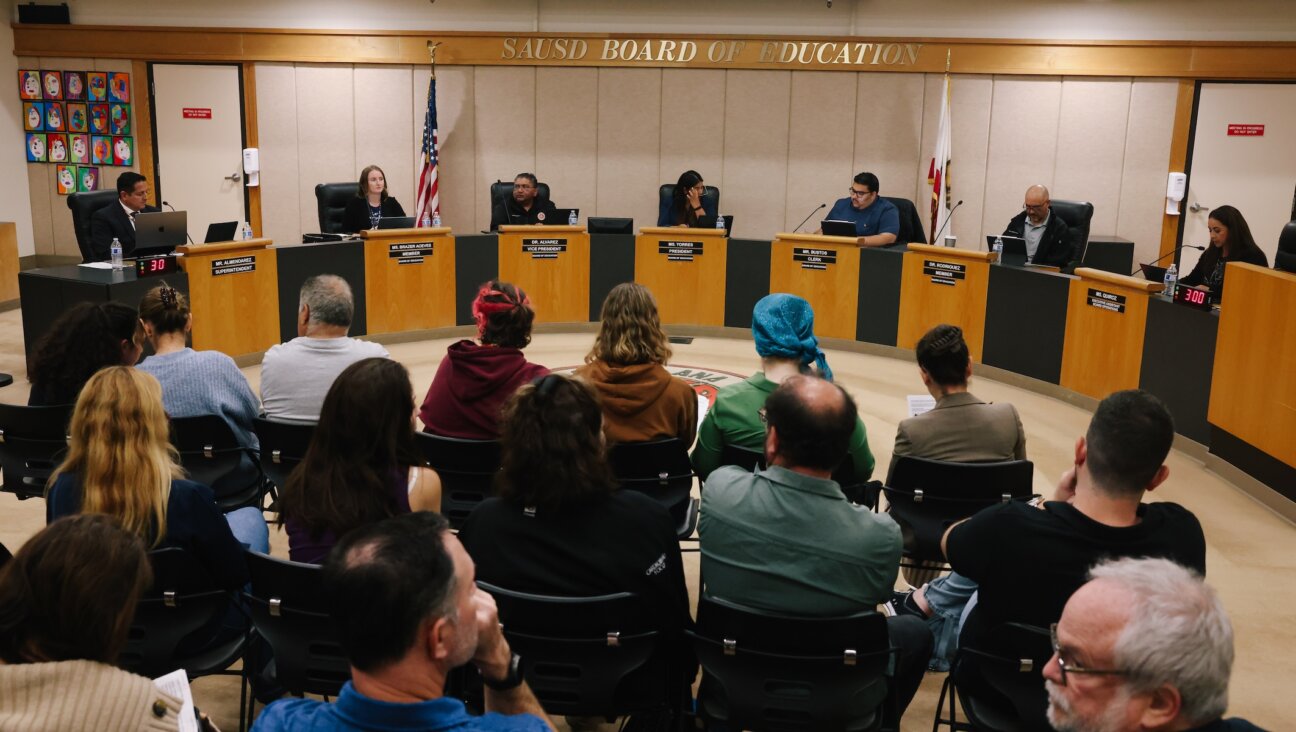An American Journalist’s Hasidic Tale
The Rabbi of 84th Street: The Extraordinary Life of Haskel Besser
By Warren Kozak
HarperCollins, 200 pages, $24.95.
* * *|
Since the era of the Baal Shem Tov and the first Hasidic leaders, one of the primary attractions of Hasidism as a movement has been the Hasidic story. A little shaggy-dog — a bit rambling, sure, but reliably entertaining and often delightful — the Hasidic story was part declaration of faith, part celebration of the rebbe’s unique spiritual powers and part acknowledgement of the world’s sheer oddity. While these stories often had a moral lesson to impart to their listeners, they were also simply great fun.
Warren Kozak’s new book, “The Rabbi of 84th Street: The Extraordinary Life of Haskel Besser,” is like an American journalist’s version of the rebbe stories, regaling his audience with one great adventure after another. Unlike the traditional version, these are told to a distinctly non-Hasidic crowd. Many anecdotes are preceded with so much in the way of prefatory disclaimers that they may as well have begun, “You may not believe this, but….” Kozak, a regular contributor to National Public Radio, and like Besser, an employee of the Lauder Foundation, looks to make Besser, a well-known personage in the New York Jewish community, into a better-known public figure.
Cynics might see the project as a book-length public relations pitch for the Lauder Foundation, but “The Rabbi of 84th Street” sidesteps this issue by concentrating most of its energies elsewhere. A collation of stories about Rabbi Besser told quasi-chronologically, “The Rabbi of 84th Street” appears to be a compilation of the best yarns that Kozak heard while sitting at the rabbi’s feet. Taking a page from the Hasidic storytellers, Kozak ties together this material with encomiums to Besser, making this something of a saint’s portrait, with the aged rabbi deemed capable of bringing about the return to faith in a faithless world. This is all fairly silly, but “The Rabbi of 84th Street” remains worthwhile for its fleshing out of Besser’s fascinating life story.
Haskel Besser was born in Katowice, Poland, in 1923, to a family of modern Hasidim. His father, Naftali, was a banker, and a close advisor to the leader of one of the great Hasidic dynasties — Rabbi Shlomo Rabinowitz, the Radomsker Rebbe. Following Kristallnacht, Naftali and the rest of the Besser family fled to Palestine, leaving behind Haskel to manage the remainder of their business affairs. Making a number of close escapes from the ever-present Nazis, Haskel arrived at the boat that would take him to the Holy Land, giving away his last dollar for a bribe as he stepped aboard. The date was September 1, 1939.
Life in Palestine was a 180-degree turn from that of Poland. The family settled in Tel Aviv, where Haskel was encouraged to marry. One candidate, the daughter of a wealthy family, was intrigued, but only on condition that he cease wearing his shtreimel, the traditional fur hat worn by Hasidim that she found entirely unsuitable to Tel Aviv’s desert climate. Haskell’s desire to maintain tradition, though, overrode any interest, material or otherwise: “She had a point… it was uncomfortable. But I dressed that way then and now because my father and his father did the same.” He ended up marrying Liba, his wife of more than 50 years. Following the war, they moved to New York. Besser went into commercial real estate with a partner, and became something of an oracle to Jews in need of good advice as spiritual leader of a small shul on Manhattan’s Upper West Side. He also partnered with billionaire Ronald Lauder on a project seeking to bring Jewish education to the children of Eastern Europe — a mission that has consumed Besser for the past 20 years. With news reports appearing regularly in the past few years about tensions between Orthodox and non-Orthodox Jews in Poland and elsewhere in Eastern Europe, one wonders how Lauder and Besser, a Reform philanthropist and a Hasidic rabbi, respectively, manage to work together so fruitfully, but this is a subject “The Rabbi of 84th Street” avoids assiduously.
The joy of the Hasidic story was always partially located in its embrace of the non sequitur, and once Kozak throws his hands up and lets the book run its own course, we hear Besser’s funny, world-weary voice at its best. Funniest is a story about Gabriel Reiner, a friend of the rabbi’s who accompanied an American chess champion on a trip to the Soviet Union. While there, the chess player and his entourage were invited to an embassy party, where they were surprised at the arrival of Nikita Khrushchev. Reiner was the only one daring enough to summon the courage to talk to Khrushchev, and after being decimated in a vodka-drinking competition (Khrushchev downed 27 shots!), he petitioned the Soviet leader to allow freer travel to his country for American tourists, as a means of encouraging dialogue between American and Soviet citizens. Khrushchev agreed and gave Reiner sole control over the arranging of tourist visas.
For those looking for a straightforward accounting of Besser’s life, and of the milieu that formed him, your hopes will be dashed by the cavalcade of unrelated stories that come hurtling out of “The Rabbi of 84th Street.” For those willing to suspend disbelief, and who understand that these stories say much about how the Hasidic mind works in its love of faith over scientific logic, “The Rabbi of 84th Street” has much to offer.
Saul Austerlitz is a freelance writer in New York City.
A message from our Publisher & CEO Rachel Fishman Feddersen

I hope you appreciated this article. Before you go, I’d like to ask you to please support the Forward’s award-winning, nonprofit journalism so that we can be prepared for whatever news 2025 brings.
At a time when other newsrooms are closing or cutting back, the Forward has removed its paywall and invested additional resources to report on the ground from Israel and around the U.S. on the impact of the war, rising antisemitism and polarized discourse.
Readers like you make it all possible. Support our work by becoming a Forward Member and connect with our journalism and your community.
— Rachel Fishman Feddersen, Publisher and CEO





























